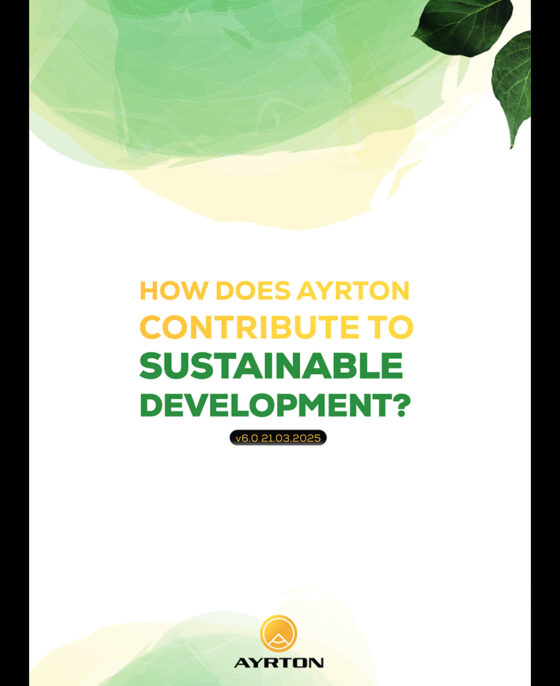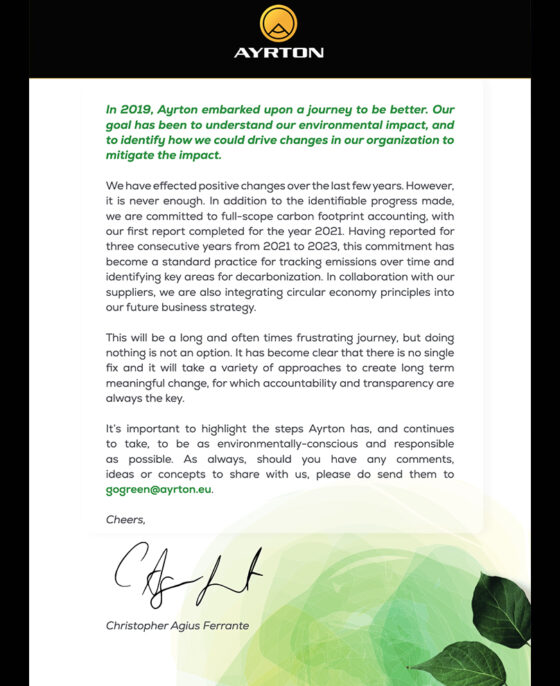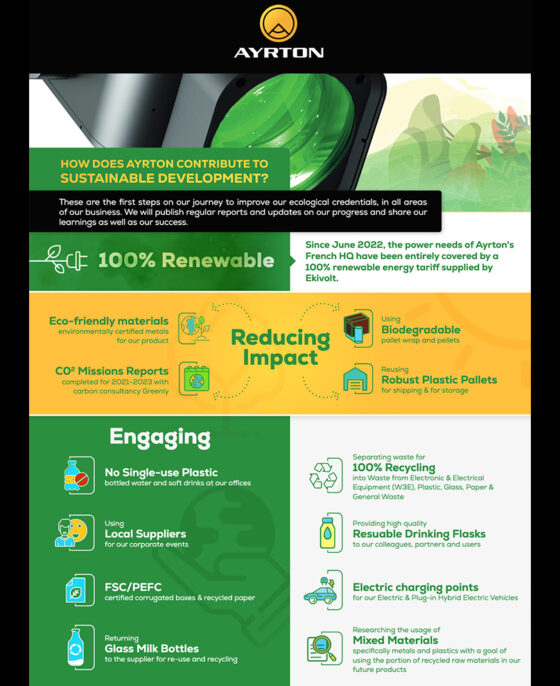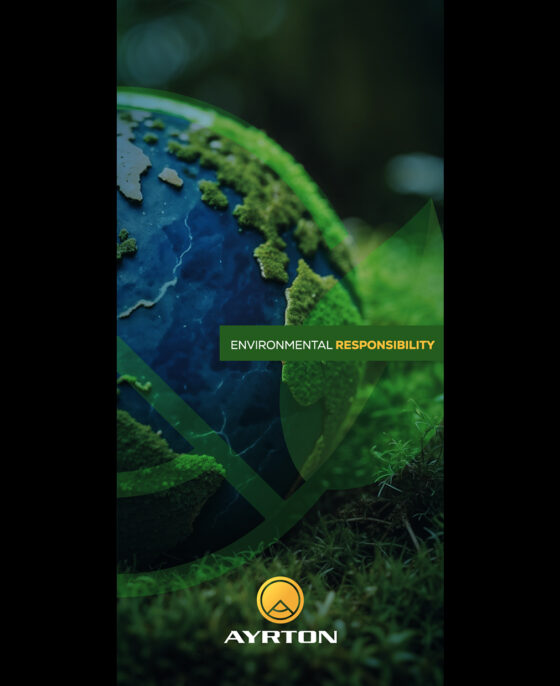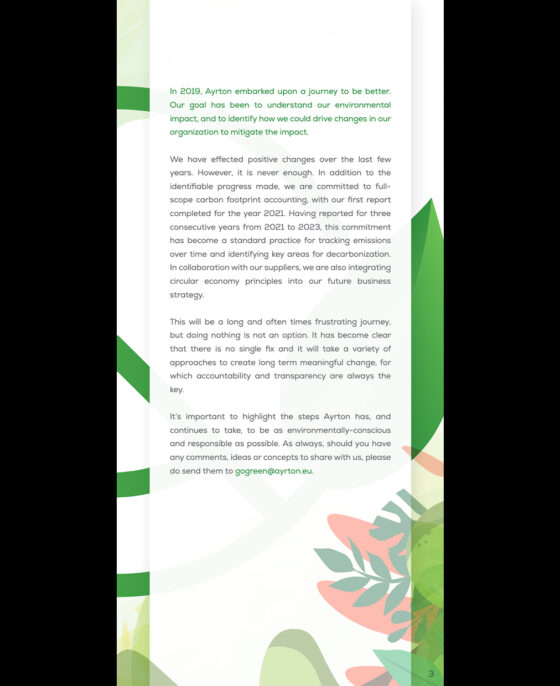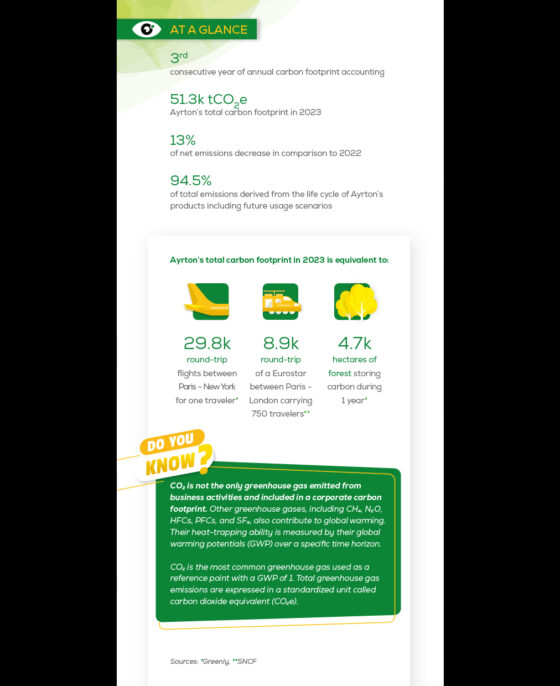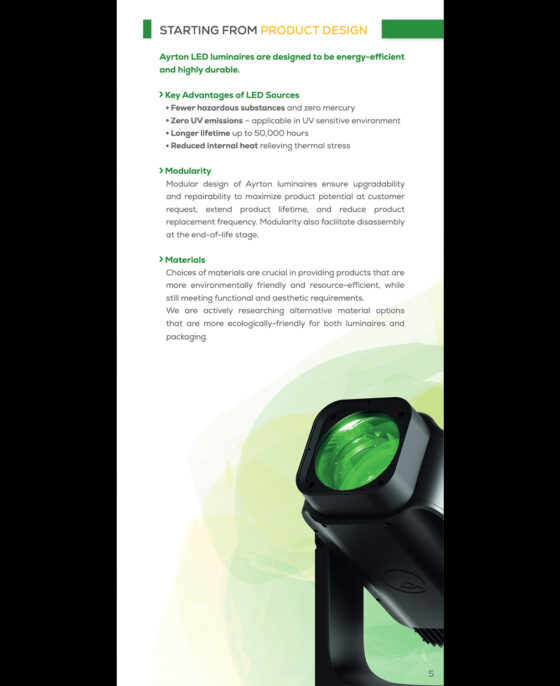How does Ayrton contribute
to Sustainable Development?
These are the first steps on our journey to improve our ecological credentials, in all areas of our business. We will publish regular reports and updates on our progress and share our learnings as well as our success.
2024 Executive Summary of Carbon Footprint
Ayrton is committed, at an organizational level,
to continually improve how we approach sustainability.
In August 2025, we completed our 2024 Carbon Footprint Report with the carbon management platform Greenly, marking the fourth consecutive year of annual carbon footprint accounting.
Reporting period
January 1, 2024 to December 31, 2024.
Measurement scope
All emissions under the operational control of Ayrton’s Headquarters in France and the office in Germany, generated in and outside the country of operation, covering Scope 1, 2 & 3.
Accounting methodology
Official methodology of the French Ministry of Ecological Transition, with audit-ready report.
Project calendar
Launched in April 2025 and finalized in August 2025.
100% Renewable
Since June 2022, the power needs of Ayrton French HQ are now entirely covered with 100% renewable energy tariff supplied by Ekivolt.
Reducing Impact




Eco-friendly materials
environmentally certified metals for our product
C02 Missions Reports
completed for 2021 & 2022 by consultancy Greenly
Using
Biodegradable
pallet wrap and pellets
Reusing
Robust Plastic Pallets
for shipping & for storage
Engaging
At this time of increased focus on the environmental challenges we face, it is important we highlight the steps Ayrton has, and continues to take to be as environmentally conscious and responsible as possible.



Local Suppliers
Partnering with local vendors for our corporate events
No Single-use Plastic
bottled water and soft drinks at our offices
Resuable Drinking Flasks
for our colleagues, partners & users
Recycling
Separate waste into Plastic, Glass, Paper & General Waste
FSC/PEFC
certified corrugated boxes & recycled paper
General Overview
44.9 k tCO2e
14%
71.9%
11%
43.3k tCO2e
Total carbon emissions
in 2024
Net decrease of total emissions
compared to 2023
Energy consumption of Product Sold
in the usage phase stands as the most significant category of total emissions
Emissions from air freight,
a dominant source contributing over 98% of total freight emissions
Carbon emissions
from the life cycle of Ayrton’s products


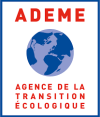
Carbon Footprint by Category
19 tCO2e
Onsite emissions generated directly by Ayrton, such as diesel combustion and refrigerant leakage
27 tCO2e
Indirect emissions from purchased electricity, heat or steam
44.9k tCO2e
Indirect emissions across the organization’s upstream and downstream value chain, including purchased good and services, use of sold products, transportation and distribution, etc.
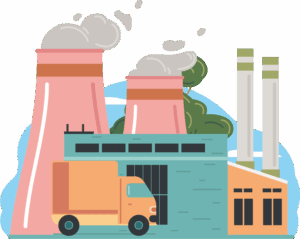
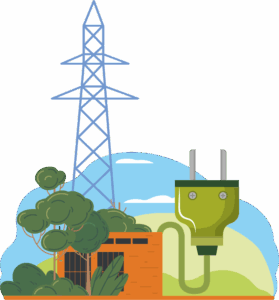

SCOPE 1
SCOPE 2
SCOPE 3
BREAKDOWN OF SCOPE 3
- 71.9% Use of product sold
- 13.5% Product purchase
- 11.7% Freight
- 1.6% Travel & Commute
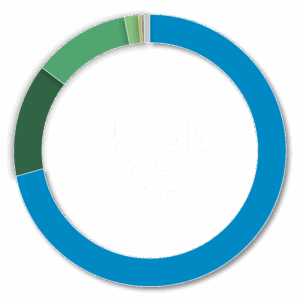
- 0.3% Activities & Events
- 0.3% Service purchase
- 0.7% Other
Product embodied carbon & Operational carbon
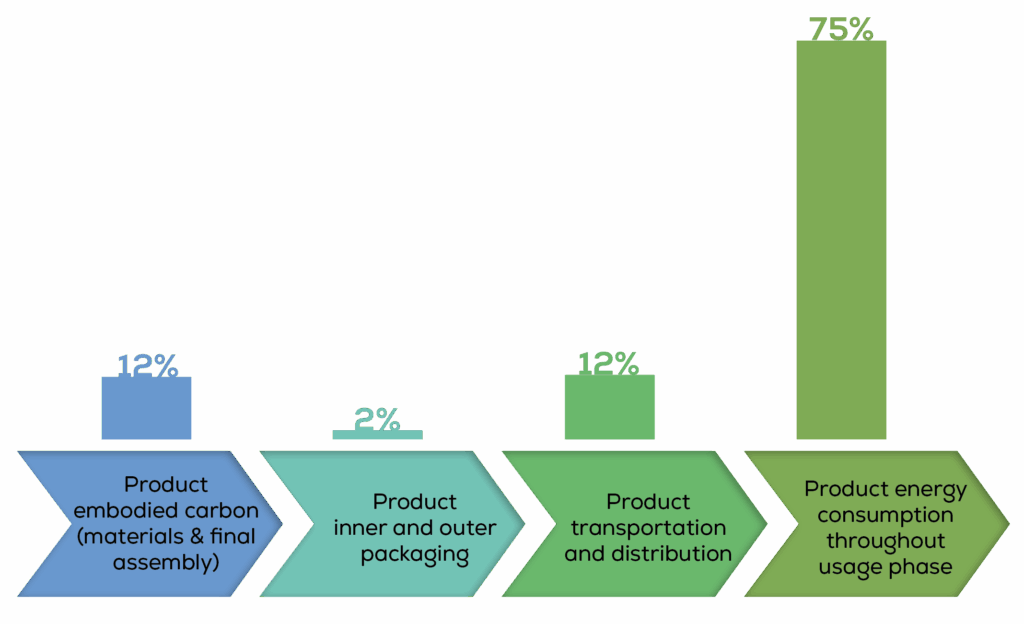
- Emissions factors are generic data from recognized databases including ecoinvent and ADEME Base Carbone etc.
- Product operational carbon emissions are calculated based on estimated usage hours, average power output, and the 2024 electricity emission factor of the country where the product is sold.

- 1% EPE foam
- 7% Cardboard
- 91% PU Insert
PU inserts, though responsible for 91% of packaging emissions, are durable and reusable, offering a longer lifespan that supports waste reduction and product protection.
Emission evolution
1. Year-over-Year Evolution
2. In Comparison to 2023
From 2023 to 2024, Ayrton’s emission intensity per revenue decreased by 18%, showing our potential in enhancing business performance while managing carbon impact.
The most significant emissions reduction comes from Scope 3: Use of product sold. It is primarily driven by improvements in the electricity mix across key markets. This reflects a broader, external trend of structural decarbonization in global energy systems. Although it’s an area where we have limited direct control, we can expect a continued positive impact on our carbon footprint from this trend.
Medias
Let's create meaningful,
long-term change together
As we continue to build upon the change we have created we are investigating offsetting alongside decarbonisation as part of our overall mix. We understand that offsetting is a challenging topic and we are committed to only using traceable/gold standard offsetting programs when we do so. As always, should you have any comments, ideas or concepts to share with us please do so [email protected].
